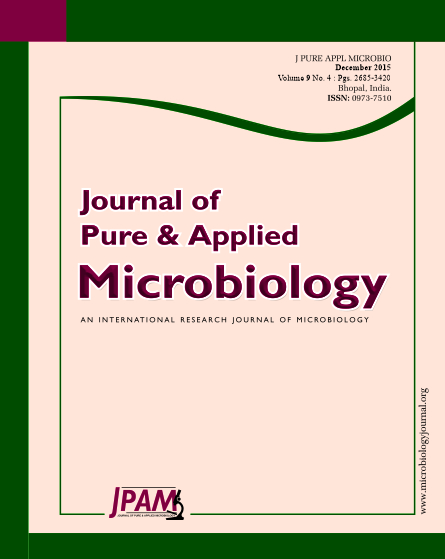A field experiment was conducted at the Central Research Farm in the experimental field of AICRP on Water Management, BCKV, Gayeshpur, West Bengal, India, during 2011 and 2012 to assess the different irrigation and nutrition schedules on yield and water productivity of turmeric (Curcuma Longa L). The trial was laid out in a splitplot design with four irrigation schedules (I1 = 0.6 IW/CPE, I2 = 0.9 IW/CPE, I3 = 1.2 IW/ CPE and I4 = rainfed) in main-plots and three nutrient sources (N1 = 100 % inorganic, N2 = 75 % inorganic + 25 % FYM and N3 = 50 % inorganic + 25 % FYM + 25 % vermicompost) in sub-plots with three replications. The results significantly showed that mean highest value of fresh rhizome yield (23.90 kg ha-1), qualitative yield (9.86% oleoresin, 4.47% curcumin and 5.05% oil content, respectively) and water productivity (54.9 kg ha-1 mm-1) was obtained with irrigation schedule at 0.9 IW/CPE ratio, whereas the lowest fresh rhizome yield and water productivity of 15.25 kg ha-1 and 35.0 kg ha-1 mm-1 was recorded under rainfed condition, respectively. Among the nutrient sources at 50 % inorganic + 25 % FYM + 25 % vermicompost (N3) was registered mean highest value of fresh rhizome yield (21.86 kg ha-1), qualitative yield (9.41% oleresin, 4.45% curcumin and 4.89% oil content, respectively) and water productivity (54.9 kg ha-1 mm-1) over the nutrient sources of 100 % inorganic (N1) and 75 % inorganic + 25 % FYM (N2). The interaction between irrigation schedules and nutrient sources revealed that the maximum fresh rhizome yield (25.71 kg ha-1) was demonstrated under (I2N3) treatment combinations.
Turmeric; Irrigation schedule; Nutrient source; Yield; Quality; Water productivity.
© The Author(s) 2015. Open Access. This article is distributed under the terms of the Creative Commons Attribution 4.0 International License which permits unrestricted use, sharing, distribution, and reproduction in any medium, provided you give appropriate credit to the original author(s) and the source, provide a link to the Creative Commons license, and indicate if changes were made.


